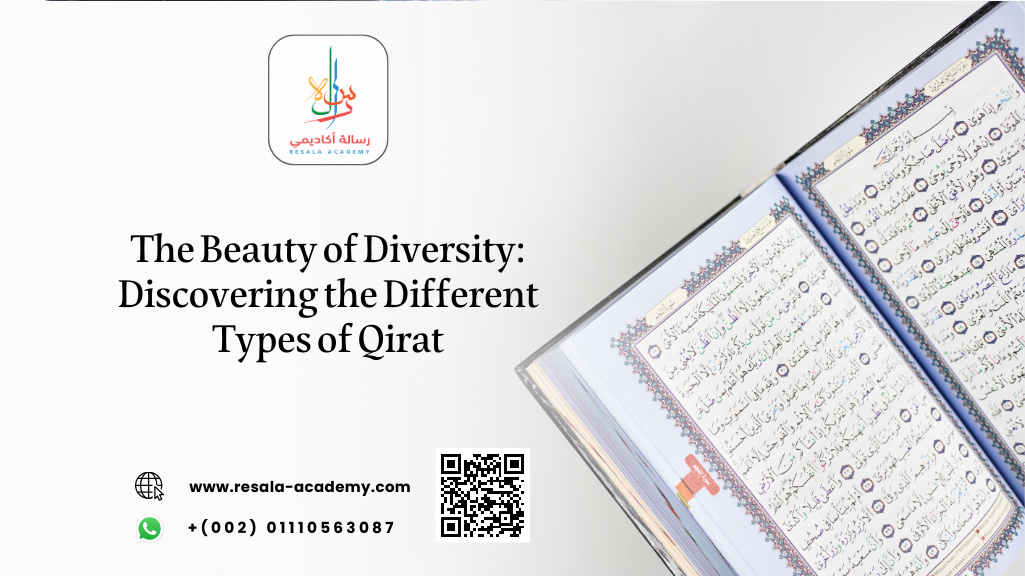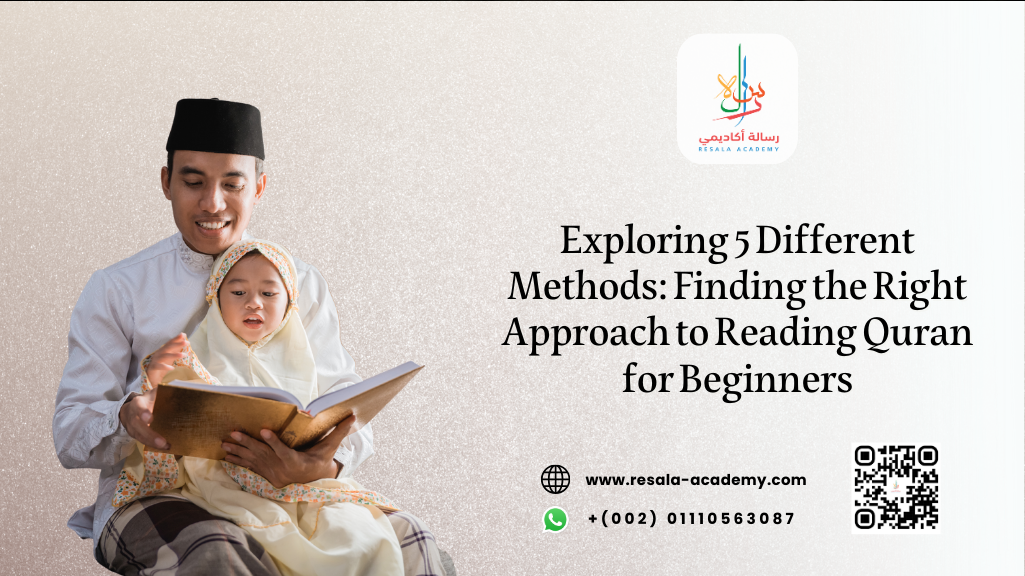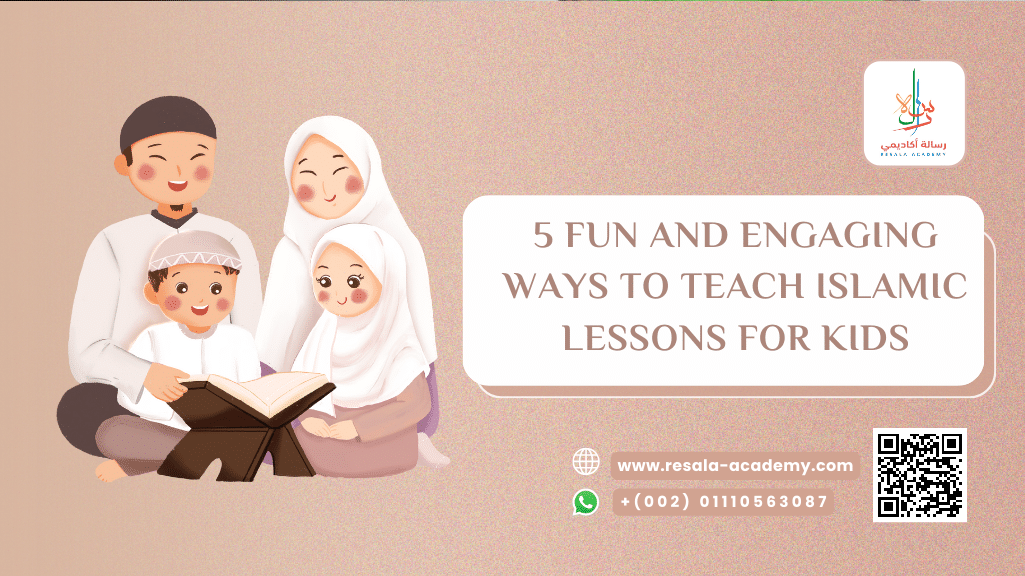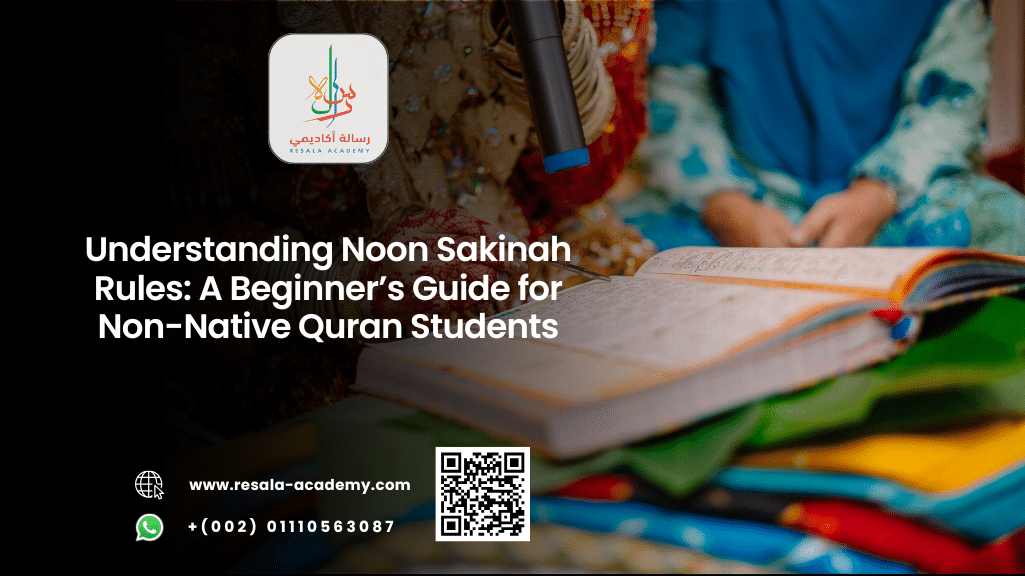Table of Contents
The Beauty of Diversity: Discovering the Different Types of Qirat
Welcome to the enchanting world of Qirat, where the melodious recitation of the Quran takes center stage. Just like a kaleidoscope, Qirat unveils an array of mesmerizing colors and patterns that reflect the beauty and diversity within Islam. In this blog post, we will embark on a fascinating journey through different types of Qirat, delving into their history, and significance, and even uncovering some hidden truths along the way.
Prepare to be captivated as we explore the artistry behind each recitation style and dive deep into the mystical realm of Ahruf. From understanding Quranic orthography to unraveling canonical qira’at and beyond, there is no shortage of wonders awaiting us in this exploration.
So grab your metaphorical magnifying glass as we embark on an illuminating expedition through the captivating world of Qirat. Let’s embrace diversity by celebrating each unique voice that brings life to our sacred scriptures. Are you ready? Let’s begin!
Understanding Qira’at and Ahruf
Qira’at and Ahruf: What a mysterious duo! Let’s unravel this enigma, shall we? Qira’at refers to the various ways of reciting the Quran, adding different flavors to its verses. It’s like a symphony composed with diverse melodies that harmonize beautifully together. But wait, there’s more! Ahruf takes us deeper into the rabbit hole by exploring the multiple readings and linguistic variations of the Quran during Prophet Muhammad’s time.
Now, imagine each Qirat as a unique brushstroke on an artistic canvas. Each one brings forth its cadence, rhythm, and pronunciation, showcasing the beauty of linguistic diversity within Islam. Some may emphasize elongation while others focus on clarity or softness in their recitation style. Together, these qira’at create a rich tapestry that mesmerizes listeners from all corners of the globe.
But here’s where things get even more intriguing – Ahruf reveals that there are different modes of expression used in the revelation itself! These modes provide flexibility for readers across different regions and dialects without compromising on authenticity or meaning. How astonishing it is to witness how Allah accommodates His message to resonate with people from diverse backgrounds!
So let us embrace this captivating world where words dance off pages and hearts find solace in sacred verses. The journey has only just begun; fasten your seatbelts as we delve further into history and explore why Qirat holds such immense importance within Islam.
The History of Qirat
Qirat, the art of reciting the Quran, has a rich and fascinating history that dates back centuries. It is rooted in the time of Prophet Muhammad (peace be upon him), who would recite verses from the Quran to his companions and followers. These early recitations were passed down orally from generation to generation, ensuring the preservation of both the text and its proper pronunciation.
Over time, different schools of Qirat emerged as scholars sought to standardize how the Quran was recited. These schools developed unique styles and methods for pronouncing certain letters and words, creating a beautiful tapestry of diversity within this sacred practice.
As Islam spread across different regions and cultures, variations in Qirat also began to emerge. Each region brought its linguistic nuances into its recitation style, resulting in a kaleidoscope of melodic interpretations that reflect both cultural influences and personal preferences.
So when we delve into the history of Qirat, we discover not only an evolution but also an appreciation for diversity – a recognition that there can be beauty in differences. This legacy continues to inspire Muslims around the world today as they strive to perfect their qira’ahs while embracing others with respect and admiration for their unique renditions of Allah’s divine message.
The Importance of Qirat in Islam
Qirat, the art of reciting the Quran, holds immense significance in Islam. It is not simply about reading the verses; it is a spiritual journey that connects believers to their Creator. The importance of qirat lies in its ability to preserve and transmit the divine message as revealed to Prophet Muhammad (peace be upon him).
Through qirat, Muslims learn to recite the Quran with proper pronunciation and intonation, known as Tajweed. This ensures that every word is pronounced correctly, allowing for a deeper understanding and appreciation of the Quranic text. Qirat also helps maintain uniformity in recitation across different regions and dialects.
Furthermore, qirat plays a vital role in preserving the authenticity of the Quran. The criteria for canonical status ensure that only those recitations that trace back directly to the Prophet Muhammad are accepted as authoritative versions of the Quran. This guarantees that Muslims worldwide have access to an accurate representation of Allah’s words.
Understanding and practicing qirat is crucial for all Muslims who seek a closer relationship with Allah through His divine revelation. It enables them to engage with the beauty and wisdom contained within each verse while upholding the integrity of this timeless scripture.
Quranic orthography
Quranic orthography is not just about the words written in the Quran, but also about their proper pronunciation and recitation. It’s like a symphony of letters and sounds that come together to create a beautiful melody. The Arabic language has its unique script, known as the Arabic alphabet, which consists of 28 letters. These letters are combined to form different words and phrases that convey Allah’s message.
When it comes to Quranic orthography, every letter and punctuation mark holds immense significance. The placement of diacritical marks (tashkeel) helps in determining the correct pronunciation of each word. This attention to detail ensures that every verse is recited with precision and utmost respect.
Understanding Quranic orthography is essential for anyone who wants to delve deeper into the beauty of qirat. By mastering this aspect, one can truly appreciate the intricate details embedded within each letter and word of the Quran.
So next time you open your Mus’haf or listen to someone recite beautifully from memory, take a moment to appreciate not only what is being said but also how it is being said – through the artful mastery of Quranic orthography.
Recitations
Recitations are an essential aspect of Quranic studies, adding a melodious rhythm to the recitation of Allah’s words. They bring life and beauty to the verses, transporting listeners into a realm of spiritual connection. Each recitation is unique in its style and pronunciation, reflecting the diverse linguistic backgrounds of Muslims around the world.
When it comes to recitations, various styles and methods have been passed down through generations. These different approaches emphasize specific rules related to pronunciation, intonation, and even pauses within verses. The aim is not only to accurately convey the meaning but also to evoke deep emotional connections with the divine message.
The art of reciting with proper Tajweed (rules for correct pronunciation) enhances one’s ability to communicate effectively and allows for a more profound understanding of the text. By following these guidelines meticulously, each word becomes clear and impactful when uttered. Tajweed ensures that every letter is pronounced correctly according to its articulation points while considering any applicable diacritical marks or elongations.
Intriguingly, some criteria determine whether a particular mode of recitation achieves canonical status. Scholars consider factors such as authenticity in transmission chains back to Prophet Muhammad (peace be upon him), adherence to established rules without contradicting other authenticated modes, consistency with Quranic orthography variations (Ahruf), linguistic sense preservation, and acceptance by reputable scholars throughout history.
Reciting with Tajweed
Reciting the Quran is not just about reading the words on a page; it’s about connecting with the divine message and understanding its profound meaning. That’s where Tajweed comes in. Tajweed is an essential aspect of Quranic recitation, focusing on proper pronunciation, articulation, and intonation.
When we recite with Tajweed, we honor the beauty and eloquence of the Arabic language while ensuring that each letter is pronounced correctly. It involves applying specific rules to produce clear sounds and maintain a melodious rhythm. By mastering Tajweed, we can enhance our connection with the Quran and experience a deeper level of spiritual growth.
Tajweed isn’t just for scholars or advanced learners; it’s for everyone who seeks a meaningful relationship with Allah’s words. Learning how to recite with Tajweed requires patience, practice, and dedication but brings immense rewards. So whether you’re starting your journey or have been reciting for years, remember that every effort you put into perfecting your Tajweed will elevate your connection to the divine revelation.
At Resala Academy, we offer comprehensive online courses designed to help individuals learn and master different types of Qirat while incorporating proper Tajweed principles. Our experienced instructors provide personalized guidance to ensure that students understand each rule thoroughly and can apply them effectively in their recitation.
Embark on this beautiful journey of discovering Qira’at by learning how to recite with impeccable Tajweed at Resala Academy today!
Criteria for canonical status
Qirat, the art of reciting the Quran, holds immense significance in Islam. But what makes a particular recitation style gain canonical status? Let’s dive into the intriguing world of Qirat and explore its criteria for achieving this esteemed position.
Quranic orthography plays a vital role in determining the canonical status of a Qirat. The accuracy and adherence to the original script are essential. Reciters must preserve every dot, vowel sign, and diacritic mark precisely as they appear in the written text.
Recitations should follow specific established principles known as Tajweed. These rules govern proper pronunciation, rhythm, and intonation while reciting. A mastery of Tajweed ensures that each word is articulated with clarity and beauty.
To achieve canonical status, a Qirat must meet certain scholarly standards recognized by scholars throughout history. These criteria involve authenticity of transmission from reliable sources and adherence to sound linguistic principles found within Arabic grammar.
The path to attaining canonical status for any Qirat involves meticulous attention to detail regarding orthography, proficiency in Tajweed rules, and meeting scholarly standards—an arduous yet rewarding journey for those dedicated to preserving this sacred tradition.
The Seven Canonical Qira’at
1. Qalun: Named after the famous reciter, Nafi’ al-Madani, this style is known for its slow and melodic rhythm. It emphasizes pronunciation and elongation of vowels.
2. Warsh: Popular in North Africa, it follows the recitation of Uthman ibn Affan. This qira’ah focuses on clarity and simplicity, making it accessible to new learners.
3. Al-Duri: Derived from Abu ‘Amr ibn al-‘Ala’, this qira’ah stands out with its unique intonation patterns. It adds depth and beauty to the recitation while maintaining accuracy.
4. Al-Susi: Based on Ibn Kathir’s riwayah, this qira’ah is characterized by its strong emphasis on tajweed rules. It highlights the proper articulation of letters and correct pronunciation.
5. Hafs: The most widely used qira’ah worldwide, attributed to ‘Asim ibn Abi al-Najudh. Its popularity stems from its clear structure and fluidity.
6. Tuhfah: Also known as “Qalun an-Nafi'”, it is a variant of Qalun but with slight differences in pronunciation and melody.
7. Shu’bah: Named after Shu’bah ibn ‘Ayyash who was renowned for his precise memory, this style is distinguished by its meticulous attention to detail when pronouncing words.
These seven canonical qira’at serve as pathways through which Muslims can connect with the divine message in their unique way! Each one offers a distinctive flavor that reflects the diversity within Islam itself – a true testament to the beauty of our religion!
Exploring “The Three after the Seven”
The Seven Canonical Qira’at are widely known and revered in the Islamic world. However, there is another fascinating aspect of Quranic recitation that often goes unnoticed – “The Three after the Seven.” These three additional modes of recitation, although not as widely accepted or recognized as the canonical seven, hold a special place among scholars and enthusiasts.
These lesser-known qira’at have their unique features and variations, showcasing the diversity within the art of Quranic recitation. While they may not have attained the same level of popularity as their counterparts, they still offer valuable insights into different pronunciation styles and interpretations.
Exploring these “Three after the Seven” opens up new avenues for understanding and appreciating the beauty of Quranic recitation. Each mode brings its distinct flavor to the verses, providing listeners with alternative ways to experience the profound messages contained within them.
By delving into this lesser-explored qira’at, we can gain a deeper appreciation for the richness and depth found in different types of qirat. It allows us to celebrate diversity even within this sacred practice while fostering a greater sense of inclusivity among Muslims worldwide.
So let’s embark on this journey together – exploring “The Three after The Seven” – to discover hidden gems within Quranic recitation!
Other Modes of Recitation
While the seven canonical qira’at are widely recognized and revered, it’s important to acknowledge that there are other modes of recitation as well. These alternative recitations may not hold the same level of canonical status, but they still offer unique insights into the beauty and diversity of the Quran.
One such mode is Warsh, which is primarily used in North Africa. It differs from the mainstream Hafs qira’ah in its pronunciation and certain linguistic aspects. Another notable recitation style is Qalun, popular in Libya and parts of Algeria. Qalun follows a distinct pattern of elongation and has subtle variations in vowel sounds.
Additionally, there are regional or local variants that have been passed down through generations within specific communities or families. These alternative recitations serve as a testament to how deeply ingrained Quranic knowledge is within various cultures around the world.
Embracing these different modes allows us to appreciate the rich tapestry that exists within Islamic heritage and strengthens our understanding of the divine message conveyed through different interpretations.
Unveiling the Truth: 7 or 10 Qira’at?
When it comes to the number of Qira’at, there has been some debate among scholars. While most agree on the existence of seven canonical Qira’at, others argue that there are ten. So, what’s the truth behind this mystery?
Let’s dig a little deeper and explore both sides of the argument. Those who believe in the seven Qira’at point to historical evidence and scholarly consensus as their basis. They assert that these seven recitations were passed down through specific chains of narration from Prophet Muhammad himself.
On the other hand, proponents of ten Qira’at argue that three additional recitations were recognized later due to slight variations in pronunciation and wordings. These variations provide valuable insights into different linguistic nuances within classical Arabic.
Regardless of whether you lean towards seven or ten, it is crucial to acknowledge that each recitation holds immense beauty and significance within Islam. Each one offers a unique perspective on the Quran and allows us to delve deeper into its profound meanings.
So, let’s embrace the diversity within our sacred text and appreciate all forms of qirat for their rich heritage and spiritual value!
How to Learn and Master Qirat
Are you ready to embark on a beautiful journey of learning and mastering Qirat? Here are some tips to help you along the way. First, immerse yourself in the beauty of the Quranic orthography. Understand the intricacies of each letter and pronunciation. Practice recitations with Tajweed, which ensures proper articulation and rhythm.
Next, familiarize yourself with the criteria for canonical status. This will give you a deeper understanding of why certain Qira’at hold such significance in Islamic tradition. Explore the seven canonical Qira’at, each with its unique style and emphasis. Dive into “The Three after the Seven,” lesser-known modes that offer even more diversity.
Embrace modern technology as your ally in learning Qirat. Online platforms like Resala Academy provide comprehensive courses that cater to learners at all levels – from beginners to advanced students seeking mastery.
Remember, learning and mastering Qirat is not just about memorizing words but also experiencing the profound spiritual connection that comes with reciting Allah’s words beautifully. So grab your copy of the Quran and let this captivating journey begin!
Discovering the Beauty of Each Qira’at
As we delve deeper into the world of Qira’at, we uncover the beauty and intricacy of each unique recitation style. Each Qira’at carries its melody, rhythm, and distinct pronunciation that adds a touch of enchantment to the verses of the Quran.
The first time you hear Qari Abdul Basit’s powerful recitation or listen to Sheikh Mishary Al Afasy’s melodious voice, you can’t help but be captivated by their mastery over their chosen Qira’at. The way they effortlessly navigate through the words with such precision and emotion is truly awe-inspiring.
It is through exploring these different styles that we come to appreciate the versatility and richness of the Quranic text. Each Qira’at brings forth a new dimension, emphasizing certain aspects or nuances in ways others might not. It allows us to connect with the divine message on a deeper level and experience its profound impact from various perspectives.
So whether it’s Warsh, Hafs, or any other esteemed style of recitation, take some time to immerse yourself in their beauty. Discover how each one enhances your understanding and connection with Allah’s words as you embark on this soul-stirring journey through diverse forms of expression within Islam.
Learn the Different Types of Qirat Online with Resala Academy
Are you intrigued by the enchanting art of reciting the Quran? Do you yearn to explore the diverse world of Qirat? Look no further! Resala Academy brings you a golden opportunity to learn and master the different types of Qirat online. With its expert instructors and comprehensive courses, Resala Academy offers an immersive learning experience that will leave you mesmerized.
At Resala Academy, they understand that each individual has unique learning needs. That’s why their online platform provides flexible scheduling options, allowing you to embark on this beautiful journey at your own pace. Whether you’re a beginner or seeking advanced instruction, their qualified teachers will guide you through the intricacies of each Qirat style with patience and expertise.
With Resala Academy’s user-friendly interface, accessing high-quality resources has never been easier. Their interactive lessons include audio recordings, visual aids, and detailed explanations to help enhance your understanding. From Warsh to Qalun, from Al-Duri to Hafs – discover the rich tapestry of melodic variations in recitation as you delve into each distinct type of Qirat.
Embark on this captivating voyage today by enrolling in one of Resala Academy’s online courses. Expand your knowledge and appreciation for the diverse nature of Quranic recitation under the guidance of seasoned professionals. Join thousands of students around the globe who have unlocked the beauty within each unique form of Qirat with Resala Academy – where education meets enlightenment.
FAQ
1. How many types of Qirat are there?
There are seven canonical types of Qirat, which have been recognized as authoritative recitations since the early days of Islam. However, there is also a lesser-known group known as “The Three after the Seven,” making it a total of ten recognized modes of recitation.
2. Can anyone learn and master Qirat?
Absolutely! Learning and mastering Qirat requires dedication and practice, but it is achievable for anyone with an interest in deepening their understanding of the Quran. With proper guidance from knowledgeable teachers and resources like Resala Academy’s online courses, you can embark on this beautiful journey.
3. Are different types of Qirat equally valid?
Yes, all the recognized forms of Qirat hold equal validity when reciting the Quran. Each has its unique beauty and nuances, allowing individuals to connect with the divine message in diverse ways. The importance lies not only in memorizing or reciting accurately but also in embodying the essence and spirit behind each mode.
Conclusion
The beauty of diversity in qirat is truly awe-inspiring. From the intricacies of Quranic orthography to the melodic recitations and the deep significance placed on preserving each mode, qirat holds a special place in Islam. Whether it’s the seven canonical qira’at or the additional modes that have been passed down through generations, each one offers a unique perspective and connection with the divine words of Allah.
Learning and mastering qirat may seem like a daunting task, but with dedication and guidance, it can be achieved. Online platforms like Resala Academy provide comprehensive courses that allow individuals from all walks of life to dive into this beautiful world of recitation.
By exploring different types of qirat, we not only gain a deeper understanding of our faith but also develop an appreciation for the richness that diversity brings. Each mode has its distinct characteristics and nuances that reflect the varied traditions and cultures within Islam. By embracing these differences, we foster unity within our community while honoring our shared heritage.
So whether you choose to embark on this journey as a student or simply enjoy listening to different recitations, let us celebrate the magnificence of qirat together. Let us cherish every voice that resonates with passion and devotion as we connect with the timeless verses revealed by Allah.
In conclusion, let us continue to explore, appreciate, and learn from one another through these diverse forms of Qira’at – for they are not just about reading words off the paper but rather embodying spirituality itself!




